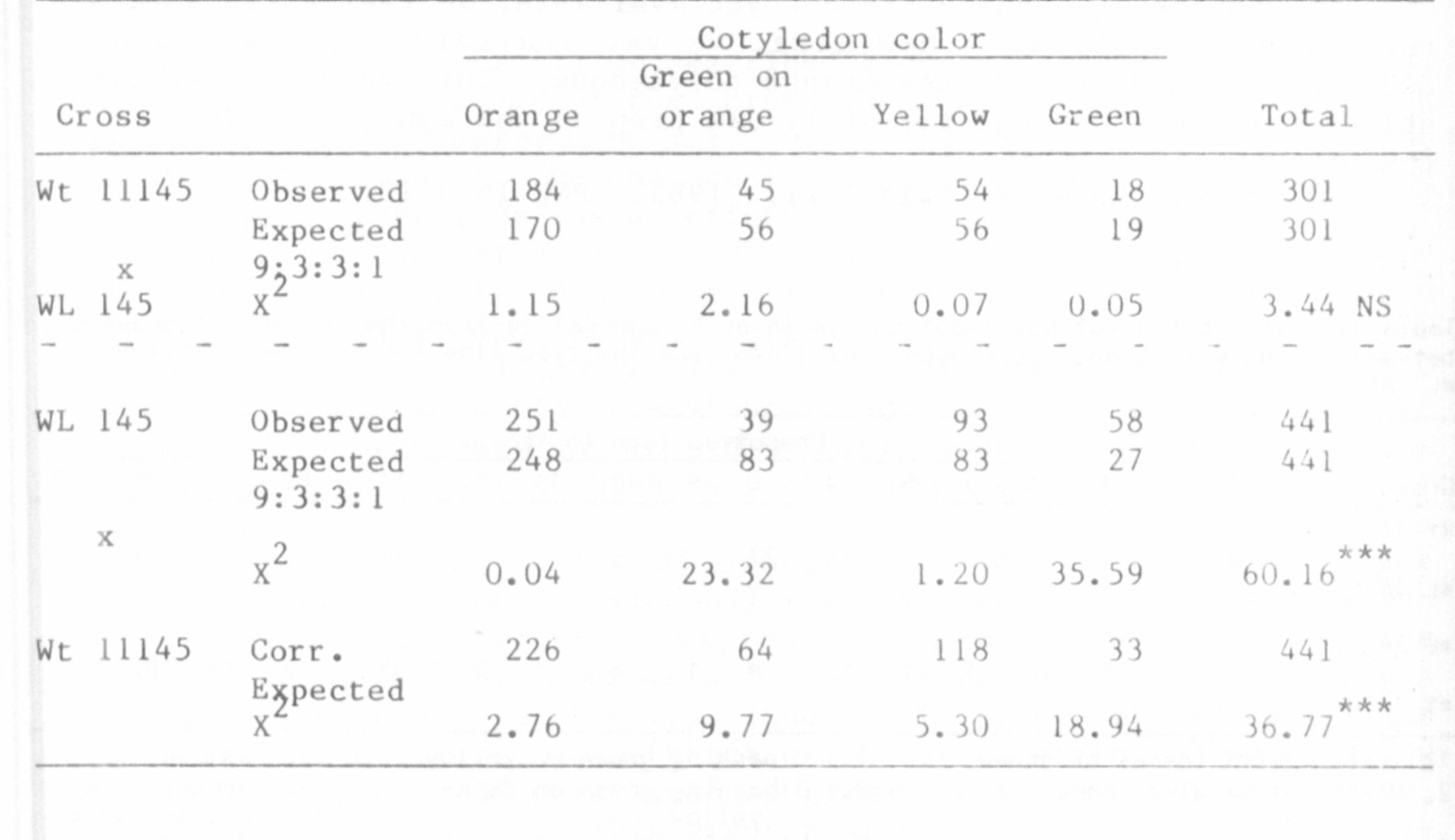Swiecicki. W. K. Plant Experiment Station, Wiatrowo, Poland
Blixt, S. Weibullsholm Plant Breeding Institute, Landskrona, Sweden
In a previous paper (1) we described a new color of pea cotyledons,
viz. orange. The F1 seeds of the cross Wt 11145 x Wt 3527 were dark
yellow and the F2 segregated 3:1 for orange vs yellow. It was not
possible to determine if the character orange cotyledons was controlled
by an allele of gene I or was an effect of a separate locus.
A survey of accessions in the Wiatrowo collection revealed exten-
sive variation for cotyledon color. The 1619 accessions observed could
be divided into five color groups: green (327 accessions); whitish or
bleached green (26); light yellow (204); yellow (732); dark yellow
(315); and light orange (15 accessions). However, the collection con-
tained no line with orange or brick cotyledons. Thus, the accession
Wt 11145, originating from China, was the only pea with the character
orange cotyledons.
To elucidate the genetics of orange cotyledons, we analyzed the
cross of Wt 11145 (orange cotyledons) x WL 145, the type line for reces-
sive i (green cotyledons). The expression of cotyledon color in the
parental lines was observed as a frame of reference. Among 316 seeds
from five selfed plants of the type line for i (green cotyledons), seven
seeds were actually yellow without any trace of green, 20 were yellow
with traces of green, 33 were bleached green, 155 were celadon green,
and 101 were dark green. This gives a picture of the range of expres-
sion of the allele i in this particular line. This problem, sometimes
referred to as bleaching, is well-known to breeders. A similar range of
variation was observed in seeds of line of the second parent, Wt 11145.
Among 320 seeds from five plants, 5 were dark yellow, 51 light orange,
214 orange and 50 brick red.
The F1 seeds of cross Wt 11145 x WL 145 (and reciprocal) were light
orange. The colors of the F2 seeds are shown in Table 1, where it
appears that the colors of the parental lines were all represented.
Line Wt 11145 manifested the colors of column 14, 15, 16, and line
WL 145 included the colors of the column 1, 4, 6, and 7. Classes found
in the F2 seeds included yellow (col. 13), green (col. 5), and green on
dark yellow, light orange, or brick background (col. 2, 3, 8, 9, 10, 11,
and 12).
The appearance of green and yellow clearly indicates that orange is
inherited independently of yellow: celadon green, i.e., the gene I.
Adding the data in the columns of Table 1, as grouped above, into
four classes corresponding to a two-gene segregation produces the result
given in Table 2. Chi-square for heterogeneity between the reciprocal
crosses was 67.7 and highly significant. This might be due either to
difficulties in classifying the green fraction and/or to a maternal
Influence on color.
The segregation in yellow:green with WT 11145 as female was 238:63,
X23:1 = 2.56); the segregation orange:non-orange was 229: 72 (X23:1= 0.16).
In the reciprocal cross, the segregation in I of 344:97 (X23:1= 2.05) is
quite acceptable. In the case of orange:nonorange the segregation
290:151 (X23:1 = 20.4)is taken to indicate that the separation orange:non-


